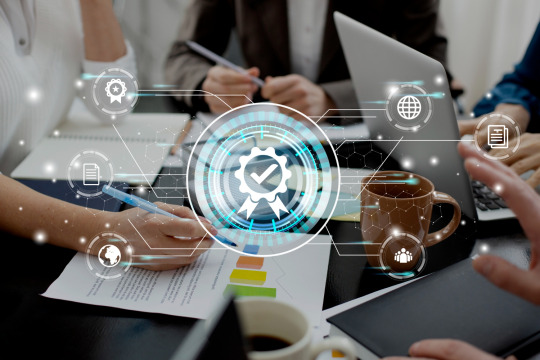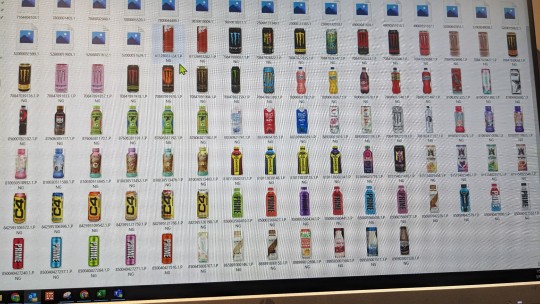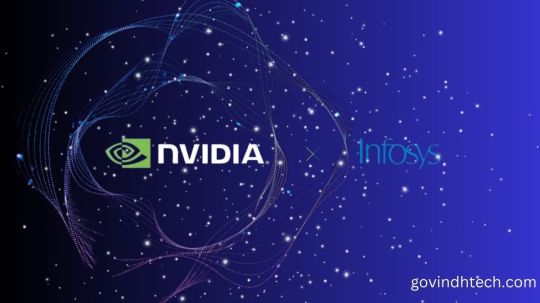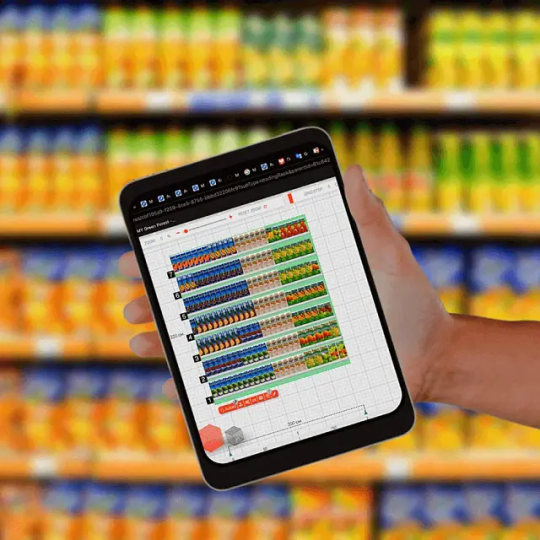#planogram software
Text
Planograms, the art of arranging products within store shelves, have now emerged as a strategic cornerstone that holds the potential to redefine the retail landscape. As online shopping continues to win the consumer heart, physical retail spaces are undergoing a comeback, reimagining themselves as immersive destinations that go beyond transactional exchanges.
#planogram#visual merchandising#planogram software#retail sales#planograms#planogramming#retail store#retail#planogram in retail
3 notes
·
View notes
Link
If you're looking for the best Category Management Software or Planogram Software, OPENCatman is the way to go. It entails informing your clients about the things available to them and where they may get them. It also entails ensuring that you don't make any errors that would confuse or frustrate your customers.
#Planogram software#Planogram online#Online POG software#Planogram maker#Retail POGs#POG software#Space planning#Shopper in store experience#Store planning#Visual merchandising#Store layout#Store display#Free Space Planning Design Software
0 notes
Text
Visual Merchandising Made Easy: The Power of Planogram Compliance Tools
In the retail world, visual merchandising serves as a crucial element in captivating customers' attention and driving sales. Among the array of tools available to retailers, planogram compliance tools stand out as powerful aids in simplifying visual merchandising efforts. Let’s delve into the transformative power of planogram compliance tools and how they make visual merchandising easier and more effective.

1. Ensuring Consistency in Product Placement
Planogram compliance tools ensure that products are consistently displayed on shelves according to predetermined planograms. This consistency not only creates an aesthetically pleasing shopping environment but also reinforces brand identity and enhances customer trust and loyalty.
2. Optimizing Shelf Space
By adhering to planograms, retailers can maximize the utilization of shelf space, ensuring that every inch of retail real estate is utilized effectively. This optimization not only enhances the visual appeal of the store but also allows retailers to showcase a wider range of products, increasing the likelihood of impulse purchases.
3. Streamlining Merchandising Processes
Manual monitoring of planogram compliance can be time-consuming and labor-intensive. Planogram compliance tools automate this process, streamlining merchandising efforts and freeing up valuable time for store personnel to focus on other critical tasks such as customer service and sales.
4. Real-Time Monitoring and Alerts
Many planogram compliance tools offer real-time monitoring capabilities, alerting store managers to any deviations from the planogram as they occur. This proactive approach enables swift issue resolution, ensuring that shelves are always well-stocked and properly organized to meet customer demand.
5. Data-Driven Decision Making
Planogram compliance tools collect valuable data on product placement, customer behavior, and sales performance. By analyzing this data, retailers gain actionable insights into the effectiveness of their visual merchandising strategies, allowing them to make informed decisions to further optimize their merchandising efforts.
Conclusion
Planogram compliance tools are invaluable assets in the realm of visual merchandising, making it easier for retailers to create visually appealing and strategically organized store layouts. By ensuring consistency in product placement, optimizing shelf space, streamlining merchandising processes, providing real-time monitoring and alerts, and enabling data-driven decision-making, planogram compliance tools empower retailers to elevate their visual merchandising efforts and drive sales. In today's competitive retail landscape, embracing technology-driven solutions like planogram compliance tools is essential for staying ahead of the curve and captivating customers' attention in an increasingly crowded marketplace.
0 notes
Link
Planograms assist retailers in collecting data that leads to better design, presentation, and merchandising decisions that increase in-store sales. You pay for your space, valued things occupy your space, and customers arrive and navigate your space to—ideally—make a purchase. Your working environment is critical to your success. However, it’s easier said than done to determine how you’ll use your store space. Customer walkways, product displays and storage, and point-of-sale setup should all be considered while designing and organising your shop. Merchandising planogram software, thankfully, can assist you in making sense of it all.
0 notes
Text
I got put on this task at work today and I'm in heaven

Basically I have a list of products that we don't have pictures of, and I have to do a little investigation to find a correct photo to steal from the Internet
Then I have to remove the .png file extension to make them .1 files so the software can pull them in when we make the planograms
9 notes
·
View notes
Text
Salesforce Consumer Goods Cloud vs. Regular Salesforce: What’s the Difference?

Research indicates that the majority of sales continue to take place through traditional retail stores. This means consumer goods companies need to step up their game in retail and connect better with customers. That’s why Salesforce, a leader in customer management solutions, has come up with Salesforce Consumer Goods Cloud. Implementing Salesforce Consumer Goods Cloud in consumer goods companies provides a smart way to manage products, plan retail strategies, and boost sales in stores.
In this article, we’ll check out the features of Salesforce Consumer Goods Cloud. We’ll also make a comparison of Salesforce Consumer Goods Cloud and Regular Salesforce in sales automation and explore the benefits of using Salesforce Consumer Goods Cloud for the consumer goods industry.
What Is Salesforce Consumer Goods Cloud?
Salesforce Consumer Goods Cloud is a suite of cloud-based software solutions tailored for companies in the consumer goods industry. It assists brands and retailers in managing various operations, improving customer experiences, and driving revenue by facilitating connections with retailers, distributors, and customers. By integrating industry-specific features with the capabilities of Salesforce CRM software, this Cloud Computing solution streamlines processes and enhances productivity across the entire business, from customer management to supply chain operations.
What Are The Features Of Salesforce Consumer Goods Cloud?
Here are the features of Salesforce Consumer Goods Cloud that make sales automation and data management easier:
Intelligent Insights with Einstein AI
Leveraging Einstein AI, Consumer Goods Cloud provides valuable insights into consumer preferences and market trends. This intelligent technology assists sales teams by suggesting complementary products, anticipating customer needs, and offering effective communication strategies to drive sales growth.
Effortless Mobile Order Capture
Representatives can seamlessly capture orders using mobile devices with Consumer Goods Cloud. This feature enhances in-store sales efficiency by allowing representatives to interact with customers while recording orders in real time, eliminating manual paperwork.
Seamless Integration with Salesforce Cloud Ecosystem
Consumer Goods Cloud seamlessly integrates with other Salesforce platforms, such as Sales Cloud, Service Cloud, and Marketing Cloud. This integration facilitates smooth data management like sharing and collaboration across departments, optimizing operations, and delivering a cohesive customer experience.
Tailored Store Layouts for Enhanced Productivity
Retailers can customize store layouts based on different categories and segments with Consumer Goods Cloud. This customization optimizes the shopping environment, improving the overall customer experience and driving productivity throughout the customer journey.
Difference Between Salesforce Consumer Goods Cloud And Regular Salesforce
Now, let’s explore the difference between Salesforce Consumer Goods Cloud and Regular Salesforce to help you understand their contrasting features and functionalities:
In-Store Audits
Salesforce Consumer Goods Cloud equips field representatives with specialized tools for efficiently capturing real-time in-store conditions like shelf placement and inventory levels. While Regular Salesforce allows capturing such data, it may lack the streamlined integration seen in Consumer Goods Cloud.
Retail Execution Monitoring
Consumer Goods Cloud offers dedicated tools for planning and tracking retail execution tasks, such as promotional displays and competitor analysis. Regular Salesforce, however, typically requires significant customization to handle these specialized retail tasks effectively.
Digital Merchandising
Consumer Goods Cloud utilizes AI-driven image recognition for shelf analysis to ensure planogram compliance, offering advanced digital merchandising capabilities. Conversely, Regular Salesforce may lack native support for such detailed digital merchandising functionalities.
Virtual Store Walkthroughs
Consumer Goods Cloud enables virtual store assessments for remote teams to seamlessly review store conditions. While Regular Salesforce may allow storing pictures or videos for store walkthroughs, it might lack the same level of integration or functionality.
Tailored Account Planning for Retail
Consumer Goods Cloud provides a tailored account planning environment aligned with retail and CPG KPIs, catering to retail-specific needs. In contrast, Regular Salesforce offers generic account management capabilities, necessitating additional customization for retail-specific requirements.
Automated Inventory Reordering
Consumer Goods Cloud integrates with ERP systems to automate inventory reordering based on real-time field data, streamlining inventory management. However, Regular Salesforce, while offering some inventory management capabilities, may lack the same level of tailoring for retail and CPG needs.
Trade Promotion Management
Consumer Goods Cloud facilitates the planning, execution, and monitoring of promotional activities, offering specialized trade promotion management features. Regular Salesforce may lack inherent support for such specialized retail promotional activities.
Specialized Retail Analytics
Consumer Goods Cloud provides pre-built dashboards and analytics tools tailored for the CPG and retail industry, offering insights into metrics like out-of-stock rates and planogram compliance. Regular Salesforce may not offer standard analytics specifically tailored to retail-specific metrics.
Retailer-Specific Marketing Campaigns
Consumer Goods Cloud allows initiating retailer-specific marketing campaigns based on in-store conditions or behavior, offering seamless integration with retail execution and planning. Regular Salesforce, while capable of managing marketing campaigns, may lack straightforward integration with retail-specific processes.
Conclusion
In conclusion, the comparison of Salesforce Consumer Goods Cloud and Regular Salesforce in sales automation reveals the specialized advantages that Consumer Goods Cloud offers for the consumer goods industry. From tailored account planning to advanced digital merchandising and automated inventory reordering, the features of Salesforce Consumer Goods Cloud provide a comprehensive solution tailored to the unique needs of retail businesses.
For businesses looking to leverage the full potential of Salesforce Consumer Goods Cloud, partnering with a certified consultant like Manras can make all the difference. With our expertise and experience in implementing Salesforce solutions, we can provide invaluable guidance and support to ensure a seamless transition and maximize the benefits of Consumer Goods Cloud for your business.
Read More: https://www.manras.com/salesforce-consumer-goods-cloud-vs-regular-salesforce-whats-the-difference/
0 notes
Text
Infosys and NVIDIA efficacy and new Generative AI solutions

Boosting Enterprise Productivity with Generative AI
Infosys, a global leader in next-generation digital services and consulting, and NVIDIA have announced that they have expanded their strategic relationship with the intention of assisting organizations all over the world in driving productivity improvements with generative artificial intelligence applications and solutions.
Through the expanded partnership, the NVIDIA AI Enterprise ecosystem of models, tools, runtimes, and GPU systems will be made available to Infosys Topaz, which will enable the company to develop an AI-first collection of services, solutions, and platforms that make use of generative AI technology. As a result of the merger, Infosys will develop products and services that clients can utilize to quickly and effectively incorporate generative AI into their operations.
In addition, Infosys wants to establish an NVIDIA Center of Excellence, in which it would train and certify 50,000 of its workers on NVIDIA AI technology. This will enable the company to give generative AI knowledge to its broad network of customers in a variety of industries.
“In order to better serve our customers all around the world with AI-based services, Infosys is transforming itself into an AI-first organization. Nandan Nilekani, co-founder and chairman of Infosys, stated that the company’s clients are looking at more complex AI use cases that have the potential to drive considerable commercial value across the entirety of their value chain. “The capabilities and solutions provided by Infosys Topaz are complementary to those provided by NVIDIA’s core stack. We are producing end-to-end industry leading AI solutions by merging our capabilities and training 50,000 of our staff on NVIDIA AI technology. These solutions will assist businesses on their road to become AI-first.
“Generative AI will drive the next wave of enterprise productivity gains,” stated Jensen Huang, creator and CEO of NVIDIA. “The NVIDIA AI Enterprise ecosystem is scaling up swiftly in order to provide the platform for generative artificial intelligence. Together, NVIDIA and Infosys will train a cadre of experts to assist companies in utilizing this platform to build bespoke apps and solutions.
Full-Stack Integration with NVIDIA Gives Advanced Infosys Solutions Their Power
Infosys employs the full-stack NVIDIA generative AI platform, which includes enterprise-grade hardware and software, to innovate throughout its business operations. Additionally, the company assists customers in the development of generative AI applications for use in business operations, sales, and marketing.
With the frameworks, pretrained models, and toolkits provided by NVIDIA AI Enterprise, such as the NVIDIA NeMo LLM framework, NVIDIA Metropolis for computer vision, and NVIDIA Riva for speech AI. Infosys has already built a number of offerings to multiple AI-first enterprise solutions across industries. These offerings may be found here. These are the following:
Integrating the Infosys Video Analytics platform with NVIDIA Metropolis brings the power of computer vision to address challenges faced by the retail industry. Some of these challenges include the following: creating frictionless shopping experiences; improving merchandising and planogram compliance; reducing shrinkage; monitoring inventory; extracting real-time intelligence; checking compliances for health, safety, and other areas; as well as for logistics, manufacturing, and utilities.
Combining the Infosys Generative AI Labs with the NVIDIA NeMo framework, which enables enterprises to fine-tune and fast-track deployments of massive language models suitable for a wide range of enterprise use cases, hence delivering a platform that is both cost-effective and easily scalable. Infosys is enhancing its Responsible AI Toolkit with the help of NVIDIA NeMo Guardrails in order to construct powerful intelligent practices to protect against the possible hazards of generative artificial intelligence. These risks include intellectual property infringement, bias and toxicity, hallucinations, and security threats.
Infosys is developing AI-driven solutions for the next generation of contact centers by combining NVIDIA Riva’s voice and translation AI with its own Infosys Cortex platform. These include language neutralization features for seamless multilingual support as well as arming contact center staff with real-time customer intent and sentiment analysis tools to improve customer satisfaction and encourage brand loyalty. Language neutralization features may be found here.
The collaboration extends to the development of digitalization applications, with a particular emphasis on the creation of solutions for enterprise use cases spanning 3D workflows, design collaboration, digital twins, world simulations, and other domains.
Infosys and NVIDIA are working together to develop AI-powered solutions for a variety of problems, including those pertaining to 5G, cybersecurity, and the energy transition.
0 notes
Text
As a globally known apparel fashion brand owner, you value the importance of effective merchandising planning in maximizing your sales and revenue. However, manual planning using traditional tools like Excel, PowerPoint or Dropboxes can be slow and labor-intensive.Visulon’s cloud-based software platform would help you optimize your merchandising planning, enabling you to create accurate product assortments, financial plans, digital workbooks, and planograms quickly and easily. Our AI-enabled platform will save you time, streamline your workflows, and help you make informed decisions about new line planning, seasonal targets, IMUs, margins, and sales strategies. Visulon’s offerings are enriched by working with our esteemed global clients.Revamp your merchandising game with Visulon! Ditch slow, manual tools like Excel and PowerPoint for our AI-powered platform. Swiftly create accurate assortments, financial plans, and more, while making informed decisions.
Visit www.visulon.com and request a demo: [email protected].
Streamline Success: https://www.visulon.com/seasonal-merchandising-planning.aspx

0 notes
Text
Collaborative Features in Planogram Software

Collaborative Features in Planogram Software
Planogram software is a powerful tool used in the retail industry to optimize store layout and improve product placement. What does planogram mean in practice? It allows retailers to create visual representations of their store's shelving and display units, enabling them to plan and organize the placement of products effectively. With planogram software, retailers can ensure that their shelves are always stocked and organized to maximize sales potential and enhance the overall shopping experience for customers.
Optimum organization of the store space with the help of planogram helps not only to attract more customers but also to reduce the costs of product placement and increase the margin, which makes it a key tool for retail enterprises.
Planogram software also helps retailers increase sales and reduce wasted shelf space by optimizing product placement. Additionally, the software includes analytics and reporting capabilities, which help retailers track their store layouts' performance and make data-driven decisions to improve sales and customer satisfaction. The software's reports identify improvement areas and inform decisions about product assortment, pricing, and promotions.
One key feature that sets specific planogram software apart from others is the availability of collaborative features. These features allow multiple users to work together in real-time, making planogram creation and optimization collaborative.
Benefits of Collaborative Features
One of the main benefits of collaborative features in planogram software is the ability for multiple team members to work simultaneously on a planogram. This eliminates the need for constant back-and-forth communication and ensures everyone is on the same page. With real-time collaboration, different team members can focus on different aspects of the planogram, such as product placement, shelf space allocation, and visual merchandising. This saves time and allows for a more efficient and effective planogram optimization.
Collaborative features also promote better communication and coordination among team members. In traditional planogram creation methods, team members often rely on emails or physical meetings to discuss changes or provide feedback. This can lead to delays and miscommunication, resulting in suboptimal planograms. With collaborative features, team members can communicate directly within the planogram software, leaving comments and suggestions for others to see. This enhances transparency and ensures everyone's input is considered, leading to more accurate and effective planograms.
Employees can easily locate and arrange items according to the specified guidelines by knowing how to read a planogram. This ensures that products are displayed in a consistent manner across different stores, leading to a more uniform and professional appearance.
Furthermore, collaborative planogram software enables retailers to leverage the expertise of their entire team. Each team member brings their unique perspective and knowledge to the table, and by working collaboratively, they can combine their insights to create the most optimized planogram possible. For example, someone with a background in visual merchandising may have valuable input on product placement and display techniques, while someone with a deep understanding of customer behavior may provide insights on optimal shelf positioning. By leveraging these diverse perspectives, retailers can create planograms that are not only visually appealing but also strategically designed to enhance sales.
In addition to real-time collaboration and improved communication, collaborative planogram software often includes version control features. This ensures that all changes made to the planogram are recorded and can be easily tracked. If any issues arise or if there is a need to revert back to a previous version, this feature allows retailers to do so with minimal effort. This eliminates the risk of losing important changes or having conflicting versions of the planogram floating around. Version control promotes accountability and ensures that everyone is working with the most up-to-date and accurate version of the planogram.

Planogram Optimization
Planogram optimization is a continuous process that requires regular analysis and adjustment. By monitoring sales data and customer feedback, retailers can identify any areas of improvement and make necessary adjustments to the planogram. This could involve rearranging product placements, changing shelf heights, or introducing new products to the display. By understanding how to read a planogram and having experience creating and implementing it, businesses can take advantage of various benefits:
Utilize their retail space. By strategically placing products in a visually appealing and organized manner, businesses can create an attractive shopping environment that encourages customers to spend more time browsing and potentially making additional purchases. This can lead to increased sales and higher revenues for the business.
Improve inventory management. By carefully analyzing sales data and customer buying behavior, businesses can determine which products are most popular and should be given priority in terms of shelf space. This ensures that the right products are always available to meet customer demand, reducing the risk of stockouts and improving overall customer satisfaction.
Enhance the customer experience. By arranging products in a logical and easy-to-navigate manner, businesses can make the shopping process more convenient and enjoyable for customers. This includes ensuring that related products are placed together and that popular items are easily accessible. A positive shopping experience increases customer satisfaction and encourages repeat visits and positive word-of-mouth recommendations.

Conclusion
In conclusion, collaborative features in planogram software offer numerous benefits for retailers seeking to optimize their store layouts. Real-time collaboration allows multiple team members to work simultaneously, enhancing efficiency and effectiveness. Improved communication and coordination ensure that everyone's input is considered and integrated into the final planogram. Leveraging the expertise of the entire team leads to more strategically designed layouts. Finally, version control features prevent any loss of important changes or conflicting versions. By utilizing collaborative features in planogram software, retailers can streamline their optimization process and create more successful store layouts.
Read the full article
0 notes
Text
Image Recognition Technology for Retail Execution is a service that utilizes advanced computer vision and artificial intelligence algorithms to analyze images and identify specific objects, products, or features within a retail environment. This technology is designed to assist retailers in optimizing their in-store operations, improving inventory management, and enhancing overall retail execution.
0 notes
Text
Retail Forecasting - The Complete Guide
Demand Forecasting is a statistical procedure that utilizes data to predict the future of businesses and the market.
One can say that retail forecasting is nothing but predicting the willingness of consumers to buy certain products, at a certain price, within a certain time frame. This process is extremely beneficial for retailers as with the help of demand planning, retailers can easily minimize costs and maximize profits by:
Choosing effective financial and merchandise targets
Setting accurate prices for every SKU
Minimizing overstocking and markdowns
What are the benefits of Retail Forecasting?
Reliable demand forecasting is significant to the health of retail functions as they have the potential to eliminate inaccurate guesswork and uncertainties. With an accurate demand planning of how many items can be sold within a specific time limit, retailers can assort, allocate, and replenish those products accordingly.
Not only streamlining supply chain and inventory management, but an accurate retail forecasting technique in a unified demand planning environment can be used to optimize capacity management, planogramming, lifecycle pricing, and more.
In short, demand forecasting is the pillar with the help of which retailers can drive a broad range of benefits across retail operations.
Benefits of Accurate Demand Forecasting in Retail
Maximized sales through specific product availability at specific SKUs
Accurate allocation and an assortment of inventory
Increased inventory turnover
Optimized markdowns through minimization of overstocking
Better lifecycle pricing, in-season, and pre-season pricing through proactive retail price optimization
Retail floor planning and planogramming through accurate analysis of retail space and predicting localized demands
How Do Retailers Forecast Demand?
From omnichannel brands to the brick and mortar stores, most retailers in the world rely on demand forecasting in today’s world to estimate which products will sell well and where.
Modern demand forecasting is a sophisticated statistical analysis that analyzes several factors to improvise that prediction.
While some retailers still rely on excel sheets and historical data, others utilize robust demand forecasting technologies to streamline their entire business operations like assortment, allocation, lifecycle pricing, financial planning, and so on.
This software also displays what existing data is being implemented to create forecasts and what factors lead to the calculation of these forecasts.
Modern demand forecasting software utilizes Machine Learning and Artificial Intelligence to automate complex and time-consuming statistical analysis and foster smart data-driven decisions.
Demand Forecasting Process: How to ensure accurate retail forecasting?
Gone are the days when time-series modeling and historical data were used to create predictions about future demand. Modern retailers have replaced these older manual modeling approaches with ML-powered demand forecasting. These demand forecasting solutions are transforming the way businesses operate today. To generate an optimal demand forecast, the system processes large-scale complex data points, along with several other components, and computes them within minutes. Whether it's seasonality, trends, or external factors such as weather, and local events, demand forecasting solutions take everything into account along with existing business data to ensure accurate retail forecasting.
Although ML-powered retail forecasting models have the power to predict the impact of several business decisions, the entire merchandising process, and forecast upcoming triggers, they can never replace human expertise. There is always a need for demand planners who can understand and analyze real-world changes. Retail demand forecasting solutions can only empower them with their powerful algorithms for impactful decision-making.
1 note
·
View note
Link
Planograms are visual merchandising tools, that help retailers organize the shelf space for the selected items for promotion and place discount labels on them to drive sales. This helps retailers reallocate shelf space for planning promotions and introducing products with discounts to re-engage shoppers.
#planogram#planogram software#visual merchandising planograms#planogram in retail#planogramming#discount sale#sales promotion#planograms
2 notes
·
View notes
Link
Merchandising software (Logiciel merchandising) solutions by OPENcatman provide inventory management and order management solutions that can be used to run a manufacturing plant or retail store. It allows retailers to place product offerings online, in-store, and integrate with point-of-sale to take advantage of in-store promotions.
Les solutions Logiciel merchandising d'OPENcatman fournissent des solutions de gestion des stocks et des commandes qui peuvent être utilisées pour gérer une usine de fabrication ou un magasin de détail. Il permet aux détaillants de placer des offres de produits en ligne, en magasin et de s'intégrer au point de vente pour profiter des promotions en magasin.
#Free Planogram software#Merchandising software#Free Space Planning Design Software#Store display#Store layout#Visual merchandising#Store planning#Space planning#Shopper in store experience#Retail POGs#POG software
0 notes
Text

Planogram compliance software is a specialized tool used by retailers to ensure that products are displayed on shelves according to predetermined planograms or layouts. These software solutions typically utilize image recognition technology to compare the actual in-store shelf layout with the intended planogram, identifying any discrepancies such as missing products, incorrect placements, or out-of-stock items. By automating the compliance monitoring process, retailers can improve merchandising efficiency, enhance customer experiences, and optimize sales performance.
0 notes
Text
Smart Shelves Market Overview, Trends, Growth, Demand, Key Players Analysis and Forecast to 2031 | Intel, Happiest Minds, PCCW Solutions
Global Smart Shelves Market report from Global Insight Services is the single authoritative source of intelligence on Smart Shelves Market. The report will provide you with analysis of impact of latest market disruptions such as Russia-Ukraine war and Covid-19 on the market. Report provides qualitative analysis of the market using various frameworks such as Porters’ and PESTLE analysis. Report includes in-depth segmentation and market size data by categories, product types, applications, and geographies. Report also includes comprehensive analysis of key issues, trends and drivers, restraints and challenges, competitive landscape, as well as recent events such as M&A activities in the market.
Smart Shelves are shelves that are equipped with sensors and connected to the internet. These shelves are able to track the items that are placed on them, as well as the movement of those items. This information can be used to help store owners better understand their inventory and how it is being used. Additionally, smart shelves can also be used to send alerts to staff members when items are running low or need to be replenished.
Get Free Sample Copy of This Report – https://www.globalinsightservices.com/request-sample/GIS20586/
Key Trends
Some of the key trends in Smart Shelves technology include the following:
1. The use of smart shelves can help to improve inventory management and accuracy.
2. Smart shelves can help to reduce labor costs associated with traditional methods of inventory management.
Key Drivers
The key drivers of the Smart Shelves market are its benefits over traditional shelves, such as its ability to provide real-time data on inventory levels, its ability to automate the restocking process, and its ability to improve customer satisfaction levels. Smart Shelves also have the potential to reduce costs associated with inventory management and shrinkage, as well as improve sales productivity.
Market Segments
By Component
Hardware
Software
By Enterprise Size
Small Medium Enterprise
Large Enterprise
By Application
Planogram Management
Inventory Management
By Region
North AmericaUS
Free Customization Available – https://www.globalinsightservices.com/request-customization/GIS20586/
Key Players
Intel
Happiest Minds
PCCW Solutions
Honeywell Inc
Huawei Technologies
Software AG
Tronitag
TraxRetail
With Global Insight Services, you receive:
10-year forecast to help you make strategic decisions
In-depth segmentation which can be customized as per your requirements
Free consultation with lead analyst of the report
Excel data pack included with all report purchases
Robust and transparent research methodology
Ground breaking research and market player-centric solutions for the upcoming decade according to the present market scenario
About Global Insight Services:
Global Insight Services (GIS) is a leading multi-industry market research firm headquartered in Delaware, US. We are committed to providing our clients with highest quality data, analysis, and tools to meet all their market research needs. With GIS, you can be assured of the quality of the deliverables, robust & transparent research methodology, and superior service.
Contact Us:
Global Insight Services LLC
16192, Coastal Highway, Lewes DE 19958
E-mail: [email protected]
Phone: +1–833–761–1700
0 notes
Note
I HOPE THEY JUST GIVE YOU THE JOB 💜💜💜💜💜 But if they want to interview you AGAIN I'm rooting for you to ace it!!
Thanks!!!! The guy who interviewed me said it's up to the client (the company I would be actually making the planograms for) and that the big question is whether they want someone without experience with their software...
We'll see! Also my boss said she's rooting for me too 😁
6 notes
·
View notes